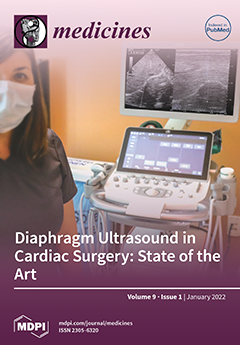Background: Tamoxifen (TMX) has proven to be effective in the prevention and treatment of breast cancer. However, long-term use of TMX is associated with hepatic steatosis, oxidative liver injury and hepatocarcinoma.
Buchholzia coriacea seeds (BCS) have been widely applied in traditional medicine due
[...] Read more.
Background: Tamoxifen (TMX) has proven to be effective in the prevention and treatment of breast cancer. However, long-term use of TMX is associated with hepatic steatosis, oxidative liver injury and hepatocarcinoma.
Buchholzia coriacea seeds (BCS) have been widely applied in traditional medicine due to their nutritional and therapeutic potentials. This study investigates the protective effect of hydroethanolic extract of (defatted)
B. coriacea seeds (HEBCS) against TMX–induced hepatotoxicity in rats.
Methods: Thirty-six (36) male albino rats were divided into six groups (
n = 6/group). Group I served as control. Group II received 50 mg/kg/day TMX orally (p.o.) (TMX) for 21 days, group III received TMX plus 125 mg/kg/d HEBCS p.o. (HEBCS 125) for 21 days, group IV received TMX plus 250 mg/kg/d HEBCS p.o. (HEBCS 250) for 21 days and rats in group V and VI received HEBCS 125 and HEBCS 250 respectively for 21 days.
Results: Compared with the control, TMX caused a significant increase (
p < 0.05) in serum hepatic function biomarkers: alanine aminotransferase, aspartate aminotransferase and alkaline phosphatase by 57%, 60% and 68% respectively. TMX also caused a significant increase in hepatic triglycerides level by 166% when compared with control and a significant decrease in serum HDL-cholesterol level by 37%. Compared with control, hepatic marker of inflammation, tumour necrosis factor alpha (TNF-α) increased significantly by 220%, coupled with significant increase in expression of interleukin 6 and cyclooxygenase 2. There was also significant increase in levels of Biomarkers of oxidative stress, nitric oxide, malondialdehyde and protein carbonyls in the TMX group by 89%, 175% and 114% respectively when compared with the control. Hepatic antioxidants, reduced glutathione (GSH) level and activities of superoxide dismutase (SOD), catalase (CAT), glutathione S-transferase (GST) and glutathione peroxidase (GSH-Px) decreased significantly in the TMX group by 35%, 67%, 41%, 59% and 53% respectively when compared with the control. However, HEBCS at 250 mg/kg significantly protected against TMX–induced hepatotoxicity by decreasing hepatic triglyceride content, serum hepatic function biomarkers, hepatic inflammation and oxidative stress with significant improvement in hepatic antioxidant system. Histopathological findings show that HEBCS alleviate TMX–induced hepatocyte ballooning.
Conclusions: Current data suggest that HEBCS protected against TMX–induced hepatotoxicity in rats. HEBCS may be useful in managing TMX–induced toxicities in breast cancer patients. It may also be helpful against other forms of liver injury involving steatosis, inflammation, free radicals, and oxidative damage.
Full article




